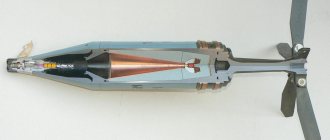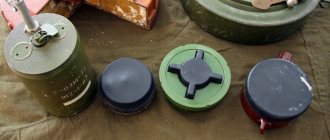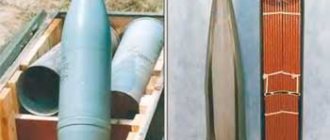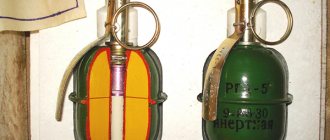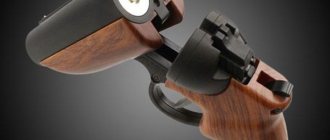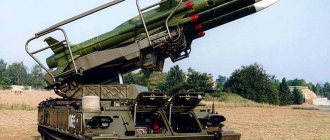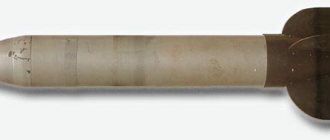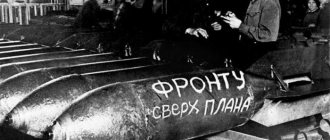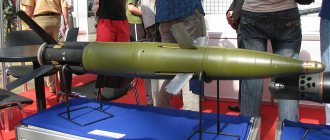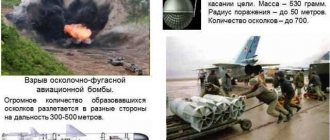Most of the weapons that people have used and continue to use appeared as a result of the use of indirect results of scientific and technological progress. One way or another, any invention always has an applied purpose. Whether this will be a military branch or a purely peaceful means of achieving a certain result - time will tell. Fragmentation ammunition is a clear confirmation of this.
Assessment and analysis of damaging factors of ammunition
Inventors in the field of chemistry, people of the military profession, in the process of combat use of ammunition, were able to consider another important property of high-explosive charges. An ordinary artillery bomb, hand grenade or powder mine filled with gunpowder when exploded caused physical damage and destruction not only due to the high-explosive effect of the explosive. It was discovered that another, no less effective damaging factor in the detonation of ammunition are fragments of destroyed inanimate objects and objects, fragments of soil scattering around the epicenter of the explosion.
The enormous kinetic energy released during the explosion gave a monstrous impulse to all surrounding small particles and fragments. These could be stone chips, fragments of destroyed stone or wooden fortifications and field fortifications. These elements, scattering at great speed, caused enormous damage to manpower.
During the wars of the 15th-18th centuries, ammunition used on the battlefield or during sieges had a high-explosive effect. Mine galleries, laid during a siege or during an attempt to break through a stable defense, performed an engineering function - to destroy the fortification. However, in reality it turned out that the main damage from such an explosion was suffered by the defenders of the fortifications as a result of the action of another damaging factor. Shards of masonry and wood chips caused severe wounds and injuries to the manpower of the defending side.
Naturally, there was a desire to immediately equip the powder bomb with additional destructive elements, thereby enhancing the damaging effect. The emphasis was no longer on high-explosive action, but on another damaging factor - fragmentation action. Thus was born the theory of determining the damaging factors for existing ammunition. High-explosive fragmentation shells, grenades and bombs replaced high-explosive bombs. However, it will still be a long time before fragmentation grenades, shells and fragmentation bombs appear on armies.
The first ammunition of this type did not have a particularly complex design. The explosive (gunpowder) was placed inside a cast-iron body, which, when detonated, shattered into small pieces. The damaging effect was observed within a radius of 10-15 meters. Artillery began to use such bombs, which became known as grenades. They were armed with special assault infantry units. The effectiveness of the combat use of the first grenades depended on the power of the gunpowder charge and the trajectory of the projectile. In artillery, howitzers and mortars began to be used for these purposes. In the infantry, the effectiveness of using a hand grenade was determined by the muscular strength and skills of the infantryman. Soldiers equipped with grenades later became known as grenadiers.
High explosive shells
High explosive shells
In the 19th century, high explosive shells became widespread. The steel body of such ammunition was filled with crushing substances - dynamite, melinite and other highly explosive compounds. The effectiveness of such a projectile was significantly superior to ammunition filled with gunpowder. This is due to the fact that when, for example, shrapnel breaks, all fragments are directed predominantly in one direction - in the direction of movement of the buckshot. In the case of high explosive shells, the explosion does not have one direction - fragments fly in all directions, as a result of which even those targets that are behind cover are hit.
Despite the sufficient hit rate, such projectiles have a serious flaw: they can explode on their own during production, storage and preparation for launch. The crushing substance enters into a chemical reaction with the metal, resulting in spontaneous combustion and subsequent detonation. To prevent an unauthorized explosion, the inside of the ammunition is coated with tin. Nevertheless, accidents continued to occur.
From shrapnel to fragmentation grenade
Artillery became the first branch of the military in which the engineering and technical side came first. As a result of numerous experiments with the effectiveness of various types of ammunition, shrapnel appeared. Thanks to the efforts of British officer William Shrapnel, the world learned about shrapnel. These fragmentation munitions became the first prototype of weapons of mass destruction. Artillery fire with shrapnel on enemy battle formations caused colossal damage to manpower.
The principle of operation of shrapnel ammunition was as follows. The bomb was filled with metal bullets. When fired at a certain height, the fuse caused the main charge to detonate. As a result of the explosion, metal bullets scattered 360°, hitting all living things in their path. Due to the fact that the charge was detonated above the battle formations, a high damaging effect was achieved. As long as artillery was smoothbore, shrapnel was considered the main ammunition of field artillery. With the development of technology, shrapnel is being replaced by high-explosive fragmentation shells. Fragmentation hand grenades are being adopted by infantry units, which has significantly increased the fire capabilities of the infantry.
In each individual case, depending on the combat situation, ammunition of one type or another was used. From the middle of the 19th century, ammunition began to be divided into types according to its mode of action. The following types of ammunition appear to equip artillery:
- basic ammunition;
- auxiliary projectiles that combined ordinary and specific properties.
The main means of destruction include high-explosive mines and shells, high-explosive fragmentation shells and bombs, fragmentation grenades and mines. Later, special ammunition appeared that performed specific functions and had other damaging factors.
The power possessed by the fragmentation effect of ammunition began to be determined by the size of the fragmentation field. The damaging effect depends on the number of fragments, their size and shape. At first, this parameter was determined by the field created by fragments of a projectile body, bomb, grenade or mine. Subsequently, according to a scheme similar to an equipped shrapnel projectile, ammunition began to be equipped with ready-made submunitions. The key factor in the effectiveness of fragmentation ammunition is the configuration of the fragmentation field. Depending on the type of ammunition and delivery method, the configuration of fragmentation fields can be of the following types:
- circular configuration of the fragmentation field;
- radially asymmetrical fragmentation field;
- axial configuration;
- flat, low-velocity fragmentation field configuration.
The first type, a circular configuration, is typical for most ammunition used. These are artillery high-explosive fragmentation shells and aerial bombs. Currently, tactical missiles are equipped with such warheads. The second type is the main characteristic of ammunition warheads in which multiple point initiation is present. Shrapnel is characterized by the axial configuration of the fragmentation field. A similar principle can be seen in anti-personnel mines, which appeared much later. Fragmentation mines today are considered one of the most insidious engineering means of destruction, thanks to which you can quickly and reliably block the passage of vast open spaces and limit the movement area in dense urban areas.
The flat configuration of fragmentation fields is a distinctive feature of anti-aircraft weapons when it is necessary to create a destruction zone on a certain horizon.
Cannonball
With the advent of the first warships, the active use of land weapons at sea began. This required different types of shells adapted for naval battles. Cutting-edge innovations have been used at every stage of development. Modern weapons have the function of homing at an enemy target, reach enormous speeds during flight, and quickly reload. Of course, several centuries ago sailors could not even dream of such technologies. Let's consider the evolution of the creation of ammunition necessary for naval artillery.
Armament of the first ships
History of ship weapons: Ram, Harpagus, Boarding
Cannon shells
Hand fragmentation grenades - as an effective means of self-defense
If in artillery and aviation fragmentation ammunition makes up half of the ammunition of the main weapons, then in infantry units fragmentation ammunition has become almost the main individual means of fire. The shock offensive function in infantry units today is performed by automatic and manual grenade launchers. A hand grenade is an individual means of enhancing the combat capabilities of a soldier.
Since its appearance, the fragmentation grenade has retained not only its basic functions, but also its design and principle of operation. A typical representative of a fragmentation grenade, the well-known “lemon” is the F-1 grenade. Despite the fact that this ammunition appeared during the First World War, the grenade was adopted by many armies around the world and continues to serve faithfully as an effective defensive weapon.
The design of the ammunition is a hollow steel body, the configuration and shape of which represents the most important secret of the combat effectiveness of the weapon. The steel shell is divided into fragments with clear geometric shapes. As a result of the detonation of the charge, fragments of the correct shape are formed from the steel shell. The killing distance in an open area is 40-50 m. Moreover, depending on the method of application, the configuration of the fragmentation field can be circular, radially asymmetrical or axial.
Modern models of fragmentation hand grenades come already complete with ready-made or semi-ready submunitions. The main feature of such ammunition is the huge number of damaging elements. These could be balls or needles, fragments of plastic, glass or ordinary sheet metal. By modifying the design of the hull and warhead, hand grenades for offensive action and weapons used for defensive purposes appeared. The products have a lower curb weight and dimensions, which makes them comfortable to wear.
Changes in design and operating principle did not affect the delivery method. As 500 years ago, a hand grenade is activated only as a result of human physical effort.
Incendiary Cannonballs
And yet the iron cores could not cause the desired damage to the enemy. The enemy ship remained afloat. It was necessary to come up with a way in which it would be destroyed. Medieval wooden ships burned well, but how can you start a fire on them if you are far from them? You can shoot a burning projectile.
The stone core was covered with incendiary substances, and in this form they were fired from cannons. During departure, the core caught fire - a fireball flew towards the enemy ship. If hit, a fire was inevitable. In the 17th century, such kernels were improved. The main incendiary composition was placed in a special bag, which was wound around the core. The resulting projectile was dipped in molten sulfur and again treated with an incendiary mixture.
Fragmentation cartridges - “know-how” of new times
Along with the advent of defensive and offensive hand grenades, fragmentation cartridges came to equip rifle units. This type of ammunition made it possible to increase the firing capabilities of small arms several times. Thanks to the presence of explosive and fragmentation cartridges in the ammunition, and the appearance of models of automatic weapons with under-barrel grenade launchers, the shooter began to have superior firepower.
By maintaining a safe distance of fire contact, it became possible to fire to kill, thereby causing physical damage to the enemy. Comparing this type of ammunition with the effect of hand grenades, there is a real advantage - the effectiveness of the damaging factor. Unlike a hand grenade, where the fragmentation field is highly dependent on the method of throwing, the cartridge has a radial fragmentation field. When hitting a target, fragments scatter at a small angle to the surface. Accordingly, the affected area increases. Fragmentation cartridges allow you to conduct attack operations in a limited space without harming the life and health of the shooter. How effective this tool is is clearly demonstrated by the results of combat operations of American troops during the Second Gulf War, when it was necessary to conduct assault operations in dense urban conditions.
Fragmentation ammunition - grenades and shells, rockets and bombs, anti-personnel mines and fragmentation cartridges today are the main element of the arsenal of any modern army. The destruction of manpower is the main factor for success on the battlefield, which cannot be achieved without the use of shells, mines and fragmentation grenades.
Modern types of projectiles
The main task of ammunition manufacturers was to increase the force of the explosion. This desire was the reason for the creation of nuclear shells - the most powerful weapons to date.
Rockets and Rocket Systems
Jet rockets appear - a jet engine is installed directly on the projectile, which sets the required flight speed. Such weapons belong to the category of unguided weapons.
Salvo from the cruiser “Voryag”
Adjustable (guided) ammunition has the following control options:
- When flying long distances, the correction system is carried out using navigation systems, for example, GPS.
- To hit a moving target, it is illuminated with a laser. In this case, the projectile reacts to this illumination, and the homing process starts.
- Cluster projectiles - at a certain stage, the rocket fires guided clusters that react to thermal radiation.
The following types of modern projectiles are distinguished:
- High explosive;
- High-explosive fragmentation;
- Anti-aircraft;
- High explosive fragmentation and incendiary;
- Fragmentation tracers.
2.3. Armor-piercing ammunition
To destroy armored vehicles (tanks, self-propelled artillery guns, armored personnel carriers, etc.), ammunition with a cumulative destructive effect, as well as kinetic armor-piercing projectiles, are used.
Types of armor-piercing ammunition
1. Cumulative.
Cumulative effect (Munro effect) - enhancing the effect of an explosion by concentrating it in a given direction.
The cumulative effect is achieved by using a charge with a cumulative conical or spherical recess facing towards the target. Depending on the shape of the cumulative notch, the cumulative effect manifests itself either in the form of a cumulative jet or an impact core.
Charges of the "cumulative jet" type
In a charge with a conical cumulative notch, a cumulative jet is formed - a hypersonic metal jet moving along the axis of the ammunition at a speed of up to 10 km/s. The jet temperature reaches 6-7 thousand degrees, pressure – 5-6 thousand kgf/cm². Detonation products focused in the jet are capable of burning holes in armored floors several tens of centimeters thick and causing fires. Moreover, the armor penetration of a cumulative jet does not depend on the strength of the armor, but depends on its density and thickness.
Charges of the "cumulative core" type
To protect against cumulative ammunition, you can use screens made of various materials located at a distance of 15-20 cm from the main structure. In this case, all the energy of the jet is spent on burning through the screen, and the main structure remains intact.
2. Kinetic.
The effect of a kinetic projectile is determined by the reserve of its kinetic energy and is characterized by armor penetration and destructive effect behind the armor. The greater the speed and mass of the projectile, the smaller the angle of contact with the armor (the angle between the longitudinal axis of the projectile and the normal to the surface of the armor at the point of contact), the greater the thickness it can penetrate. Damage behind the armor manifests itself in the form of impact, fragmentation, high-explosive and incendiary effects of the projectile.
| Rice. 2.4. Kinetic and cumulative armor-piercing ammunition |
Promising developments
At the moment, directional landmines are being replaced by high-explosive fragmentation shells. This is mainly due to the impact on objects, since the OFS has a greater damaging effect. American military engineers are developing new 40, 60, 81 and 120 mm OFS, which could be used not only by large-caliber artillery, but also by mobile mortars.
New high-explosive ammunition, the damaging factors of which have been improved, will have a lighter weight due to the replacement of the metal casing with a polymer one. According to American scientists, the new shell will not only minimally pollute the environment, but will also serve as a unique fertilizer for soil and plants.
Scientists at the Advanced Development Agency DARPA are working to create highly maneuverable air-launched guided munitions. The high-explosive missile will have high speed, maneuverability and a high degree of destruction of objects.
2.2. High explosive ammunition
They are intended to defeat enemy personnel, equipment and destroy all kinds of structures (industrial, administrative and residential buildings, railway junctions, bridges, railways and highways, etc.). The main damaging factor of high-explosive ammunition is the air shock wave that occurs during the explosion of a conventional explosive. High-explosive ammunition has a high filling factor (the ratio of the explosive mass to the total mass of the ammunition), reaching 55%, and has a caliber ranging from tens to hundreds and thousands of pounds (from 50 to 10,000 kg). High-explosive aerial bombs found the greatest use.
| Rice. 2.3. High explosive ammunition |
They may have delayed action fuses that go off automatically after some time (several minutes, hours, days, months or even years) after the bomb is dropped.
Shelters, shelters of various types, dugouts, and blocked cracks effectively protect against shock waves and fragments of high-explosive and high-explosive ammunition.
2.4. Concrete-piercing ammunition
The ammunition is designed to destroy high-strength reinforced concrete structures, as well as to destroy airfield runways. The ammunition body contains two charges - cumulative and high-explosive - and two detonators. When encountering an obstacle, an instantaneous detonator is triggered, which detonates the shaped charge. With some delay (after the ammunition passes through the ceiling), the second detonator is triggered, detonating the high-explosive charge, which causes the main destruction of the object.
There may not be a cumulative charge. In this case, the barrier is broken through due to the kinetic action of the projectile. The high-explosive charge is triggered with a delay, allowing the projectile to penetrate the barrier or enter its thickness.
| Rice. 2.5. Kinetic and cumulative concrete-piercing ammunition |
